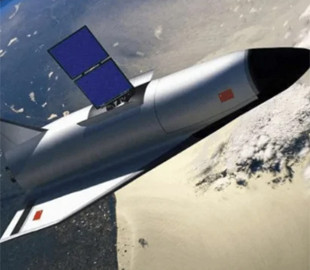
The Jetson TX2i chip, installed in the control system of the hypersonic jet engine, increased the range and flight stability of the missile.
Scientists from the Beijing Research Institute of Power Engineering and Dalian University of Technology were able to increase the effectiveness of hypersonic weapons using an artificial intelligence (AI) chip, reports SCMP.
In their work, the researchers used the Nvidia Jetson TX2i graphics processor module, which is available to any user. The speed of response of this module made it ideal for real-time optimization of the fuel supply system, fault diagnosis of the hypersonic direct-jet engine (HPJE), which drives the hypersonic aircraft capable of reaching speeds of Mach 7 (8575 km/h). . Testing of the Jetson TX2i has shown that calculations that used to take seconds can now be performed in as little as 25 milliseconds. The team of scientists stated that the TX2i module in the control system of the GPPRD not only increased the range and stability of hypersonic vehicles during flight, but also significantly reduced their research and development costs.
American company Nvidia started selling TX2i for industrial use about 6 years ago. The peak performance of the single-precision module is 1.26 Tflops, which is about one-fiftieth of the capabilities of Nvidia's most powerful AI chip — H100. However, the H100 costs tens of thousands of dollars and is in short supply, while the TX2i can be purchased for a few hundred dollars, is exempt from US export controls, and is widely available online.
Experts previously believed that AI modules could only perform simple parallel calculations, and tasks such as modeling a hypersonic flow field, where one event must occur before another can be calculated, were beyond their power. But scientists have found a way to solve the problem of serial parallel calculations by developing a new architecture of central and graphics processors.
However, the engine — only one of the components of the entire weapons platform. To apply the AI chip to hypersonic systems, further work is needed on air intake modeling, shock wave correction and data modeling, according to the developers.
But it is unlikely that the US TX2i chip will be implemented for Chinese hypersonic missiles. Processor manufacturers in the PRC can supply the country's military with chips that perform as well or even better than the TX2i. It remains unclear why the researchers chose the Nvidia chip for their experiment. It is possible that the goal was to prove the possibility of using an inexpensive AI chip for hypersonic weapons, regardless of where they are produced.

